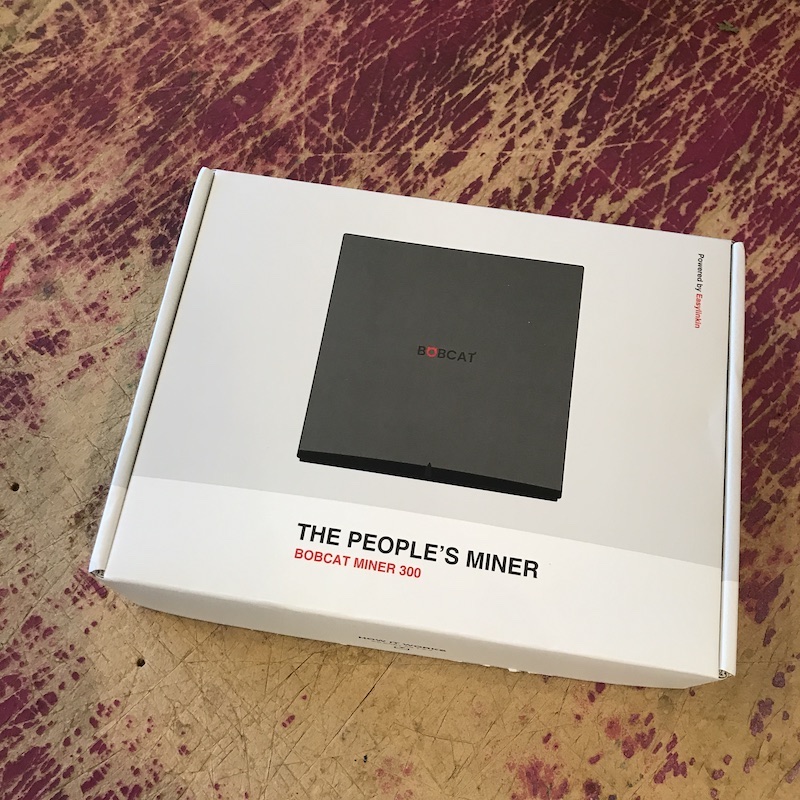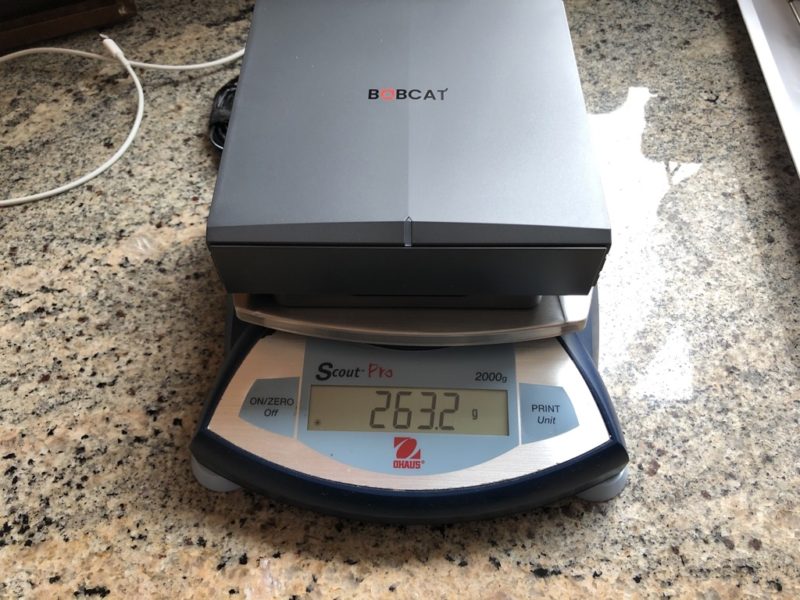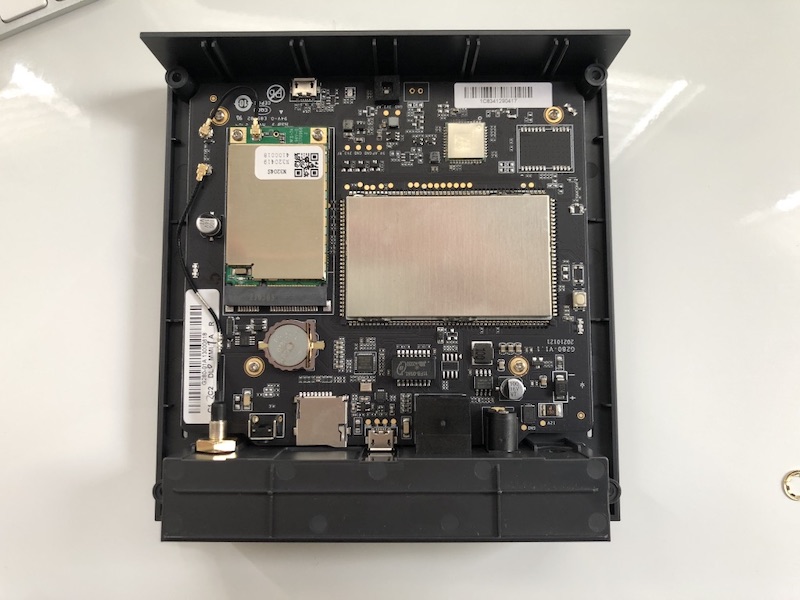A few months ago, Ann at Bobcat reached out to see if I’d like a hotspot for review. She’d read the Rough Guide To Hotspot Optimization article and liked it. She thought it might be useful to get a Bobcat hotspot into my hands ahead of the wave of normal production. I thought so too. I don’t think she expected me to do anything other than plug it in and earn HNT and talk about it, but…that’s not what I did.

If you just want to skip to the “Is the Bobcat OK?”, yes, go here. You’ll miss out on the most important part of this post, but I get it; you’re impatient.
Now, I’m not a super technical guy. Sure, I’ve built a DIY hotspot and I can read as well as anyone on the planet and figure things out enough to build the first giant badass off grid antenna that covers an entire county, but to dive in and dissect a hotspot at a master level? Not my game. So, the day after the Bobcat arrived at my door, I sent it on to someone who *could* do that.
@Jerm on Discord has spent more than a few years as a hardware guy, cracking open different pieces of hardware and breaking them down to a level that is frankly incomprehensible to most of us. He’s a competent licensed ham radio operator as well, so RF is not new for him. Like me, he’s a moderator on the Helium Discord (and since this article was written has been hired by Helium!)
We connected during the above mentioned giant badass off grid antenna installation when I needed help dialing down the transmit and receive power of the antenna I’d placed. As we worked together and I saw his capabilities, it became clear that he was the perfect fit for a Bobcat crack.
I sent the Bobcat to Jerm.
My request was that he use his expertise to understand how it worked, to find any weaknesses and strengths, and to share that journey with other mods on Discord so that we would all have “ground truth” when it came to the Bobcat.
He agreed, I sent it up to him and he started to crack it. His goal was to get so far inside the thing that he could map out its brain in 4k definition (my words, not his. He’d probably be more technical.)
He streamed parts of his hacking on Twitch so the rest of us mods could follow along, but most of it was done solo, with the full focus of 20+ years in computer security aimed squarely at the Bobcat helium miner.
I watched the Twitch, and I’d talk with him most days about it, but almost none of it was comprehensible to me.
While he spent the next few weeks diving deeper and deeper into the Bobcat, I spent more time researching Bobcat and Easylinkin. Easylinkin is the manufacturer that helps Bobcat make the devices. How are they connected? What are their goals? Why are they a good option for meeting the (currently insatiable) demand for Helium Hotspots?
This part goes into how the grand Helium experiment is a case study for how the world is changing.
Let’s start with Easylinkin, the enormous Chinese manufacturing company making the Bobcats. Here’s how they describe themselves:
“Easylinkin is a leading LoRaWAN Gateway manufacturer and invests heavily in its own R&D capabilities. In addition to designing and manufacturing LoRaWAN gateways and modules, Easylinkin owns more than 200 LPWAN related patents and has so far raised $85 million in total funding. Easylinkin’s gateways and solutions have been deployed across 100+ cities in China and abroad. It has deployed Lora networks for Alibaba in Hangzhou City, 510,000 LoRa water meters in China, and 55,000 LoRa electricity meters for Indonesia and Mongolia.”
It’s a pretty safe bet from that description that Easylinkin will be able to produce Bobcat miners at scale. They’ve been working with Semtech, the company holding the patent for the technology we’re all using, since 2018. For those of you in the manufacturing world, Bobcat utilizes the ELi 49,000 sq meter workshop space including 11 SMT lines and 73 auto robot testers. What does that mean for the rest of us? Bobcat ain’t making these in their garage, this is a full-on commercial manufacturing facility.
“Ok Nik, so where’s my Bobcat? If they’re being manufactured in this giant facility with robots and all sorts of fancy equipment, where are MINE? And what the heck is going on with their payment process? Mugglepay? PayPal refunds? USDT? C’mon, why isn’t this easy!?”
Great questions, and I had ’em too. So I asked Ann at Bobcat.
Gristle King (GK): What are the biggest hurdles you’re facing right now?
Ann @ Bobcat (BC): First, 2C (Direct to customer) market experience. Like all other IOT manufacturers, we are venturing into a 2C market for the first time. Traditionally, manufacturers deal with enterprise level customers, system integrators, large retailers and other 2B customers. We don’t consider this a hurdle but there’s a learning curve involved.
Second, the global chip shortage.
GK notes: In case you don’t have time to hit that “global chip shortage” link above, here’s the very short version: Everybody from Apple to Ford is affected by it. There has been a massive surge in demand in the past year, and industry isn’t able to keep up in the short term. Remember how toilet paper went out of stock at the beginning of COVID? This is like that. This isn’t about Helium, or Semtech, or Bobcat. This is a global issue that will take time to solve.
GK: Why is the payment system so difficult to navigate?
BC: In our April news release we mentioned the struggles we’re facing with Paypal. We’re working on moving away from Mugglepay and over to Coinbase Commerce, though that’s not official yet.
“Traditional payment aggregators [GK note: PayPal and others] consider the pre-order sales model adopted by Bobcat and other vendors to be highly volatile. Thus, in an attempt to protect themselves from chargebacks, they will hold onto customer payments for an extended period even after products are shipped.”
GK notes: This is a legitimate issue. When I first started taking payments on PayPal, PayPal would hold the payment for up to 30 days. That chokes off a starting business’ cash flow. If Bobcat can’t take the money from sales and pay invoices for production, everything slows way down until the production line can get paid. Mugglepay and paying in USDT are responses to a cashflow challenge, they’re not trying to make it difficult for you to buy a Bobcat. Trust me, no business wants to make it difficult to receive payment. This is at the core of what is fascinating about Helium, aligned incentives, and just-in-time manufacturing at scale.
GK: Does Bobcat have any plans for outdoor miners?
BC: Right now our focus is on making the one and only product we have, the Bobcat Miner 300, a solid quality product. We do have more products on our roadmap but we try not to get too ahead of ourselves and will never over promise anything if we are not 100% certain [we can] deliver. We want to grow and expand as a company, but we understand we need to do it one step at a time.
GK: Where else might we see Bobcat expanding into?
BC: We’re very experienced in providing proven, real-life IoT solutions that have been deployed on a mass scale (such as metering) and used by real customers on a daily basis to solve a real problem. Providing sensors and IoT solutions as well as more hardware for the decentralized network is a direction we’re likely to explore. Bobcat’s mission is to provide high quality hardware for decentralized networks, and the company’s presence, especially in the US will continue to grow in 2021 and beyond.
So that’s the interview, or at least the parts that you’ll find useful. I spoke more with Ann about the connection between Bobcat and Easylinkin. She made it very clear that they aren’t the same company, and they have different missions. Bobcat’s mission is to sell hardware for decentralized networks. Easylinkin is a more general device manufacturer.
With that said, we get to the most interesting piece of the whole Bobcat experience (and by extension, every other manufacturer, since all of them I know about are made in China).
We’ve all heard about globalization, but this is one of the first times many of us are directly experiencing it. Bobcat, and Bobcat’s connection to both Easylinkin and to YOU, a Bobcat customer, are an example of what happens when you get rid of most of the “middlemen” in a manufacturing process. As a Westerner (what an odd concept in a round world, right?) your interaction will not be as smooth as you’re used to. You are dealing with a different civilization, and you’re dealing with them directly. I think that’s awesome, but for many of you it’s jarring.
You’re used to Amazon delivering products in 2 days or less with the push of one button. A 12–20 week wait time and a 5 step payment process is freaking you out. When your heart starts to pitter-patter at this newness, remember that an entire business has been stood up within just a few months to meet an insatiable global demand for a new, complicated product at a scale most of us have no experience with, with materials (chips) that are in extremely short supply across many industries. It’s incredible that it has such a short lead time for all the complexities required.
The big takeaway for me is that we get to live in a time where damn near anything you want can be created and delivered to your door, no matter how technically complex, in under a few months. That has never been possible before in the history of humanity, and it’s only going to get better. Bobcat is a superb example of progression on that line, and I’m psyched they’re involved with Helium.
Is the Bobcat OK?
Yes, it’s fine. Order one here if you’re interested.
From @Jerm’s notes, with some slight modifications from Nik:
It’s a very light unit (263 grams for the one I received) that you can easily mount anywhere, and it’ll perform just like any other hotspot as far as earnings.

The LoRa radio appears to be based on the SX1301 radio, which takes more energy than the SX1302 and is slightly worse at hearing packets, but for any given placement outside of some reeeeeeallly far out off-grid ones that shouldn’t be an issue.
Bobcat has done a great job with stuff you’ll never realize you needed.
The power supply section is great. I can see that a lot of care has been taken to make sure that consumers won’t accidentally fry the hotspot with the wrong power supply.

The eMMC flash chip should prove a lot more durable than the SD-card storage used in the original Helium hotspots.
Bobcat ships a batch every Tuesday, and they are determined to only promise what they can deliver. As of this writing (early June 2021), they have met every promised delivery date.
Their antenna being 4 dBi is fine. It has a magnetic base, which can form a ground plane and improve the radiation pattern. Any of the stock antennas from any manufacturer will send a beacon as far as you need to go in order to earn HNT. See my post on antennas for more on that.
That wraps the Bobcat. Buy one if you want a Helium hotspot, and expect them to deliver when they say they will.
If you want to join a community of people serious about Helium, I’d love to invite you to check out the Gristle Crüe!

Leave a Reply